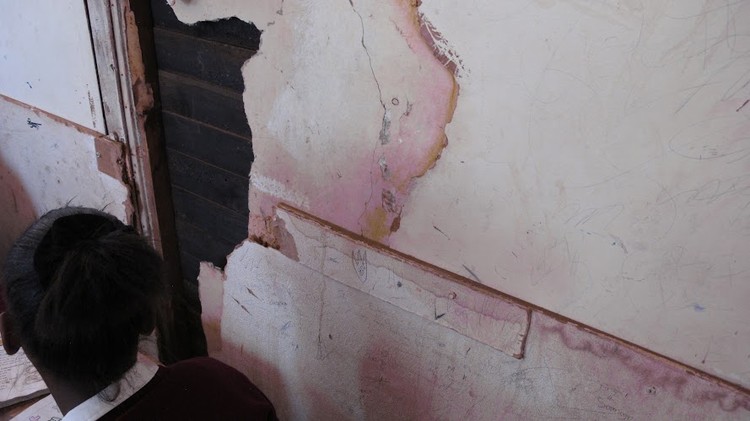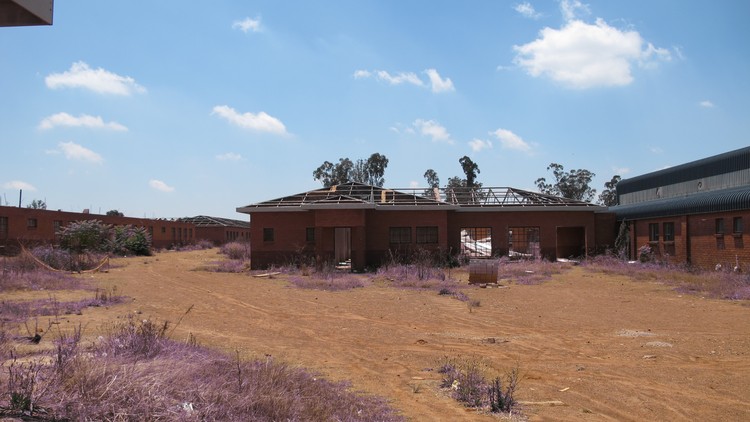22 Gauteng schools built with asbestos still haven’t been replaced
Historic Kliptown Primary School is one of them
A classroom in Kliptown Primary is said to be the very place where the Freedom Charter was signed in 1955 after its adoption. The school was built using asbestos and is in a very bad condition. Photos: Marvin Adams
- 29 Gauteng schools built with asbestos were identified for replacement in 2015.
- But only four have been replaced.
- Kliptown Primary, near the site of the adoption of the Freedom Charter in 1955, is one of the schools which have not been replaced.
- The school is in a state of disrepair, with holes in roofs and walls.
Kliptown Primary School, near the famous site of the adoption of the Freedom Charter in June 1955, is one of the oldest in Gauteng, dating back to 1899. In 2015, it was identified as one of 29 schools built with asbestos, a substance banned since 2008. Eight years later, only four of these schools have been replaced.
Kliptown Primary is in a state of disrepair, risking the health and safety of its 598 learners and staff.
The classrooms are full of holes and birds have nested in the roof. Old furniture is scattered between classrooms. Mobile toilets are positioned in front of sealed bathrooms, a testament to a water leak that has persisted for several months.
Asbestos dust can cause diseases of the lungs, including mesothelioma, a cancer.
Petunia Bailey, chairperson of the grassroots organisation Community Accountability Gatekeepers (CAG), said the school was not safe. “When it rains, it pours into these classrooms, and when it’s windy, dust blows right into the classes while teaching and learning are in progress.” She said complaints to the Department of Basic Education and the Gauteng Education Department “are falling on deaf ears.”
The are holes in the wall near the desks of learners in Kliptown Primary.
On 29 November 2013, the Minister of Basic Education Angie Motshekga signed regulations setting minimum norms and standards for public school infrastructure. These regulations mandated the replacement of schools constructed with inappropriate materials such as mud, wood, metal, or asbestos by 29 November 2016.
Gauteng Education Department spokesperson Steve Mabona said that of the 29 schools identified for replacement, four had been rebuilt, and three were in the process of being rebuilt.
The remaining 22 “are in various design stages”, he said, and would be completed before the end of March 2026.
“It is important to note that the nature of infrastructure projects is unfortunately such that unforeseen delays do sometimes occur, which would be handled on a case-by-case basis,” Mabona said.
In some cases, land had to be acquired before the construction of a new school could take place.
Learners at Nancefield Primary in Soweto have been taught in prefab classrooms since 2020 while a new school is supposedly being built.
Mabona said the department was not only focusing on schools built entirely of asbestos but also schools with asbestos roofs. “This is done through the appointment of asbestos specialists who identify the asbestos, mark it through signage, and put maintenance, training and asbestos abatement plans in place to manage facilities safely and compliantly with asbestos in the interim until the asbestos is fully eradicated.”
Nancefield Primary School in Soweto, with more than 1,200 learners and 33 teachers, is also among those identified for replacement, and construction of a new school started in 2020 on a site across the road. Learners were moved into prefab classrooms. But three years later, they are still in the prefab classrooms and nothing is happening on the construction site, where the only human presence is two security guards.
There is no sign of any building activity at the site of the new Nancefield Primary School.
Support independent journalism
Donate using Payfast

Don't miss out on the latest news
We respect your privacy, and promise we won't spam you.
© 2023 GroundUp. This article is licensed under a Creative Commons Attribution-NoDerivatives 4.0 International License.
You may republish this article, so long as you credit the authors and GroundUp, and do not change the text. Please include a link back to the original article.
We put an invisible pixel in the article so that we can count traffic to republishers. All analytics tools are solely on our servers. We do not give our logs to any third party. Logs are deleted after two weeks. We do not use any IP address identifying information except to count regional traffic. We are solely interested in counting hits, not tracking users. If you republish, please do not delete the invisible pixel.




